Showing my family the grandeur of the Canadian Rockies was not going to plan. My wife and son had flown in from New York a few days before and the centerpiece of the trip was the Canadian Remembrance Day 3 day weekend, and we’d splurged on rooms at the Fairmont Banff Springs, a grand old palace of a hotel built by the Canadian Pacific Railroad in the late 19th century to lure tourists to use the transcontinental railroad they had just completed.
Heading west from Calgary on Canada’s Route 1, driving in a straight line into the Rockies is always a bit of a thrill that never disappoints as the mountains slowly get bigger and bigger and bigger before suddenly you are in them. Except for that day — that day it was a full white out.
We had planned a couple of ‘greatest hits’ stops on the way up to Banff, including Canmore’s famous “Three Sisters.” We took a desultory walk around Quarry Lake that might have been a great foggy photowalk on the East Coast where you didn’t feel like you were missing out on anything. But knowing that one of the most beautiful landscapes in North America is sitting there unseen behind an impenetrable cloudbank made us fee that more ‘sightseeing’ that afternoon was a fool’s errand, so we decided to drive straight on to Banff and hope we could get into our rooms early.
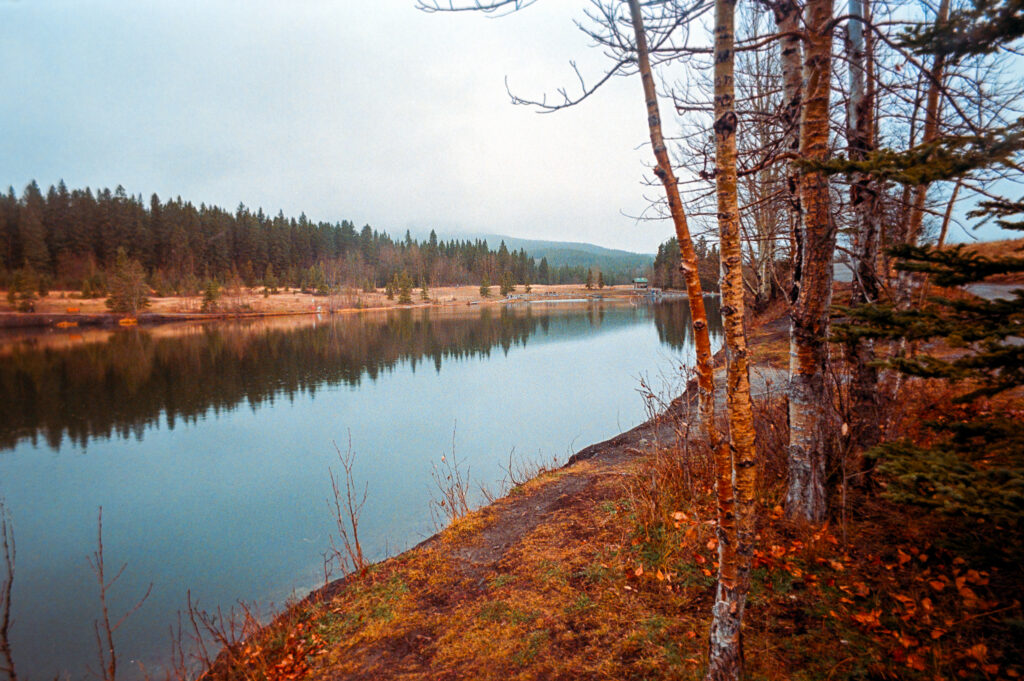
Fortunately, the hotel was ready for us and we got settled into our rooms which were lovely, with spectacular views of the Bow River Valley and Mount Rundle that we would have been able to see on most other days of the year. My son was happy to take an afternoon nap, and my wife was enjoying settling into the plush bath robe and slippers. But I was feeling the lure of the M3 sitting there in my bag barely used that day. The fog looked like it was lifting just a bit, so I decided to take the Leica out in hopes I might grab a few shots at dusk and still have plenty of time to get ready for dinner at the big hotel restaurant, which makes you feel like you’re in a Wes Anderson film.
I’m still early in my journey of learning old school all manual film photography on vintage equipment, and there have been plenty of times when I’ve spent most of a photo outing struggling to get any good photos at all. This was especially true when I first started shooting and was so excited to try out the ‘new’ vintage cameras that we had just acquired as a gift. (The story of how we acquired the cameras is in my 35mmc post “Shooting Leica Ms and a Hasselblad 500 CM in the Canadian Rockies, https://www.35mmc.com/16/02/2025/shooting-leica-ms-and-a-hasselblad-500-cm-in-the-canadian-rockies/.) I would find myself out in the middle of the day snapping away, trying to will good photos into existence out of less than promising conditions. I think I had somehow convinced myself that the images would come out better than they looked through the viewfinder because I had a famous camera.
After a couple rounds of seeing the crushing results and trying to learn from the few photos I did like, I started to develop more patience to wait until what I saw in the viewfinder looked like it might make a good photo. Not surprisingly, the photos got better. Even then, sometimes the day just doesn’t give you what you hoped for when you set out. I’ve learned not to burn a lot of film on those days unless I see something that is interesting enough to overlook less than ideal conditions.
And then there are some days and some locations where it’s hard to take a bad picture – when the weather is either gorgeous or interestingly moody, and the setting offers worthy subjects or vistas or both. And despite what had been a very inauspicious start to our holiday weekend, in the fading light of a short winter’s day in Canada I found myself in one of those moments and settings on the terrace of our hotel.
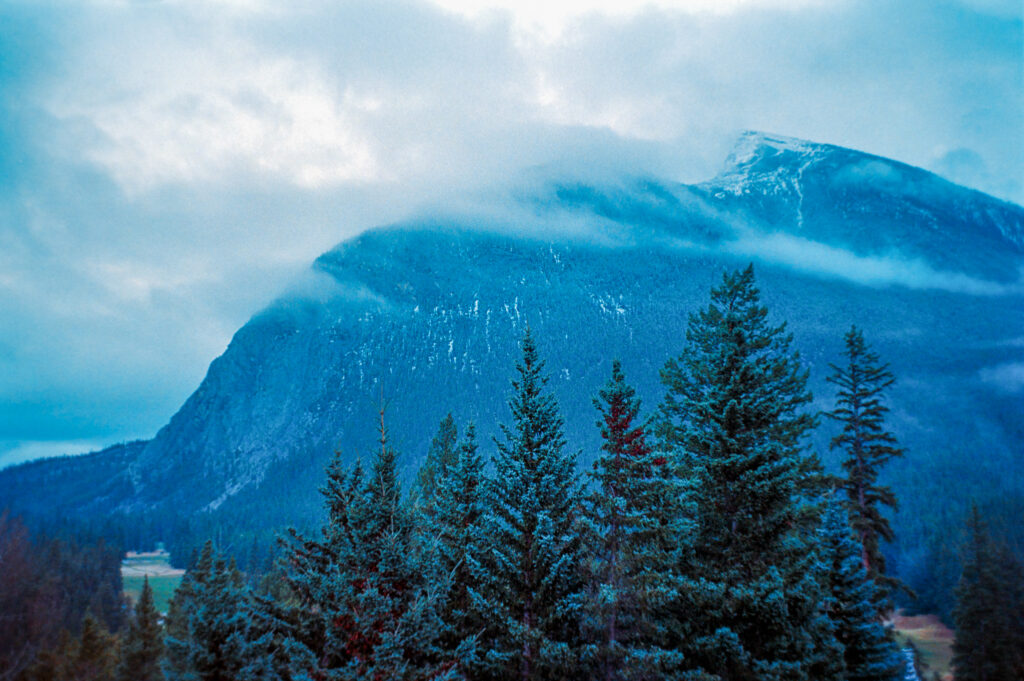
It was ‘blue hour’ and the sky was dropping quickly…
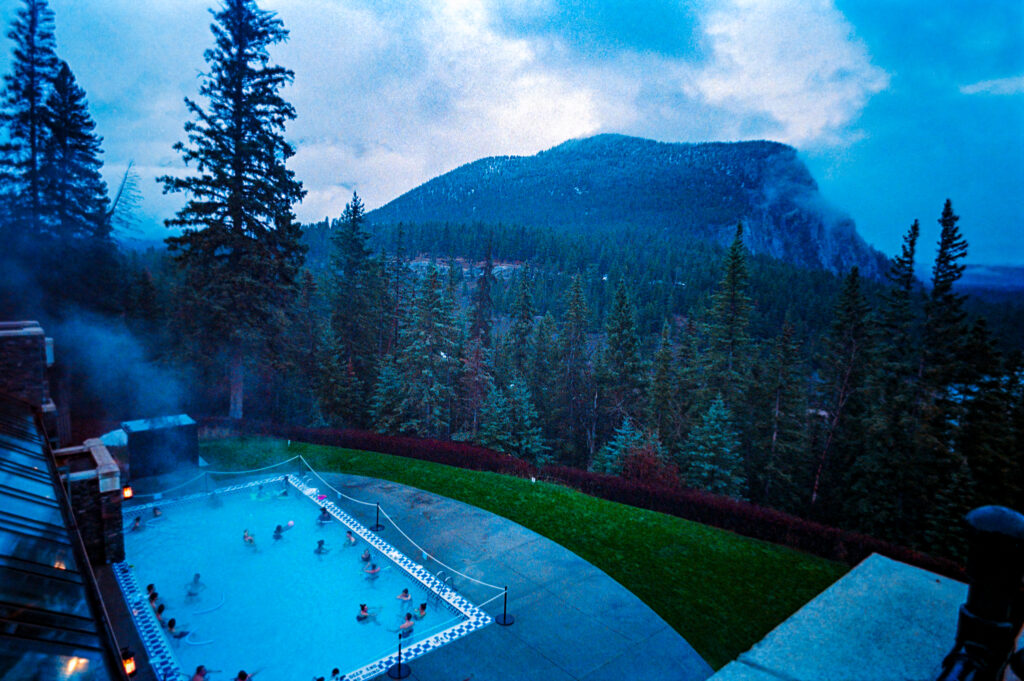
The warm tungsten lights inside the hotel and on the stone pillars lining the terrace were starting to come on. It felt spooky, romantic, eerie, calm and quiet all at once.
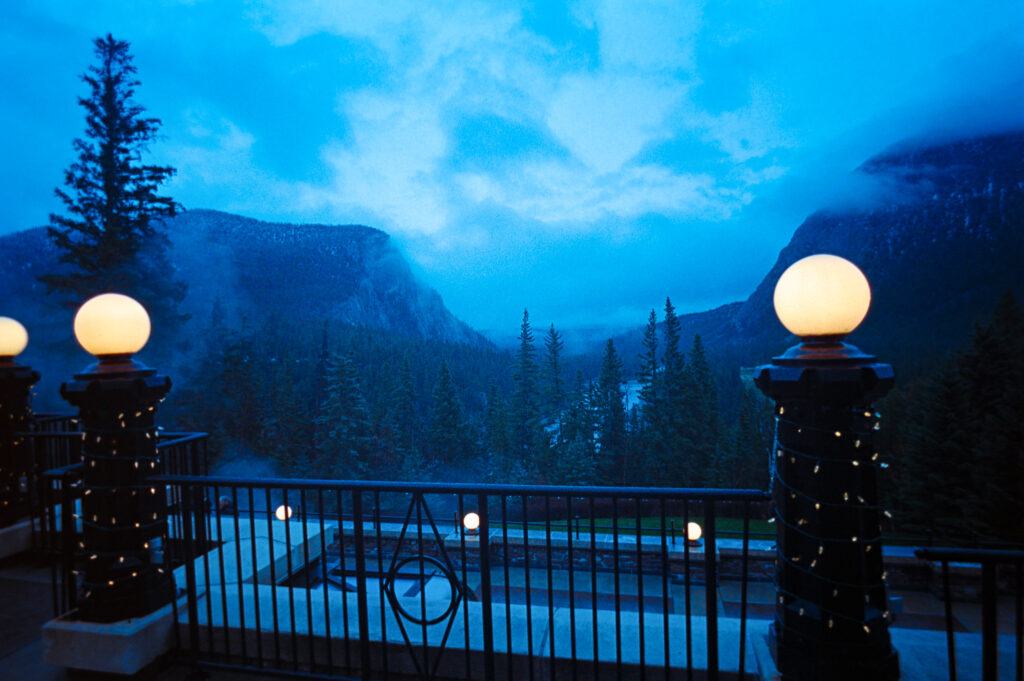
Doing blue hour shots on the terrace of the hotel wasn’t something I had thought of in advance, but sometimes showing up with a loaded camera may lead to something better than a planned shoot. I was about halfway through a roll of Kodak Ultramax — luckily a 400 ASA film. Going wide open, I had about 10 minutes of shooting at shutter speeds that were sustainable for handheld photography before I lost it. Going up to grab the tripod would have meant missing the shootable window altogether. But everywhere I looked in every direction, there was something cool, or layers of cool things receding into the foggy night.
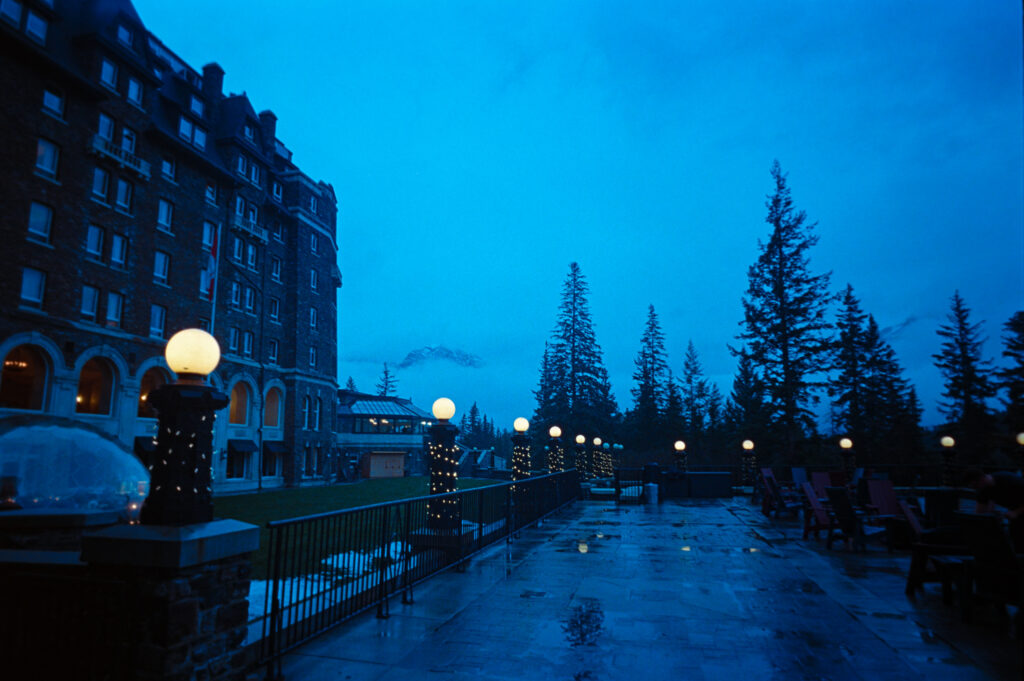
There were some cool people taking a selfie…
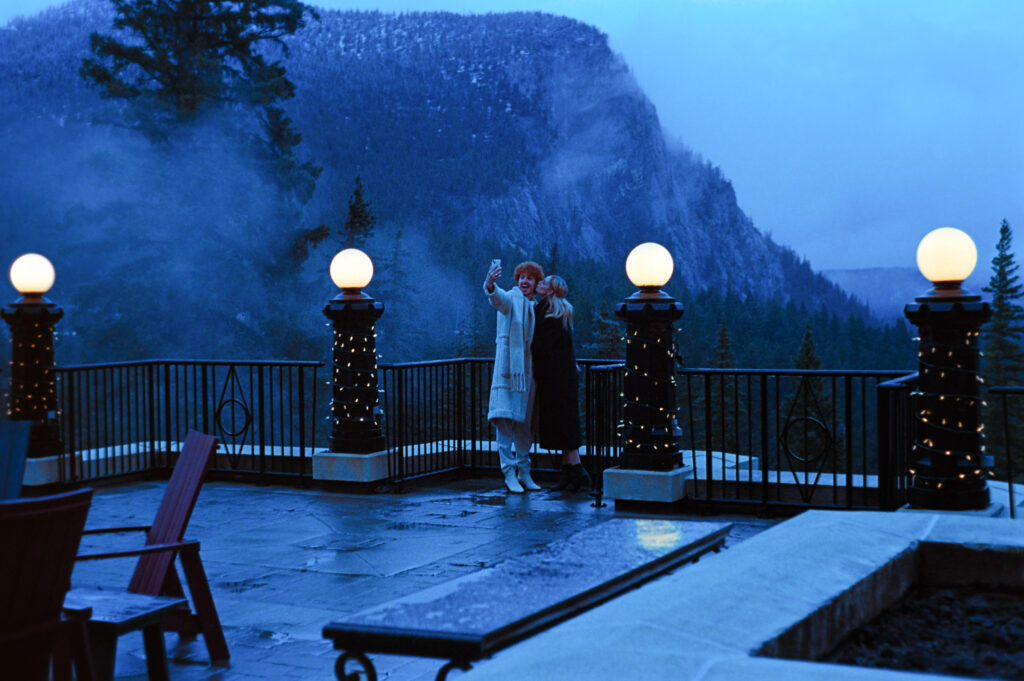
And then coolest and strangest of all, there was a glass dome in the courtyard where an attractive couple were having a private meal under the dusky sky.
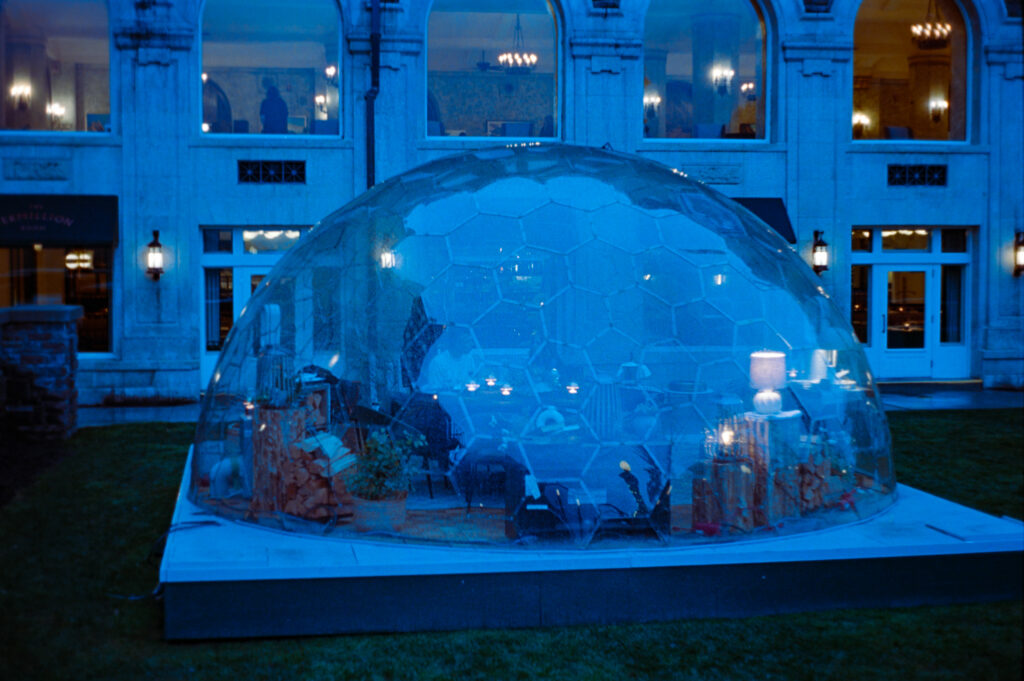
I found myself fascinated by that image and shot out what was left on my roll wandering around the terrace catching it from different angles.
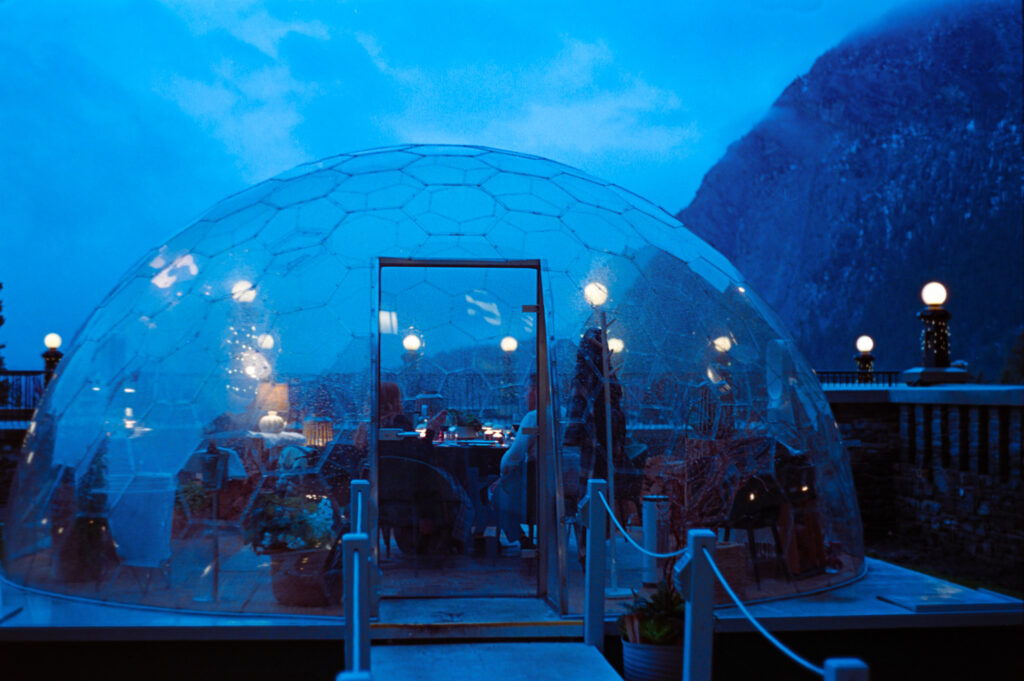
It felt very cinematic — maybe fodder for a remake of “Don’t Look Now” set in a luxury hotel in the Canadian Rockies.
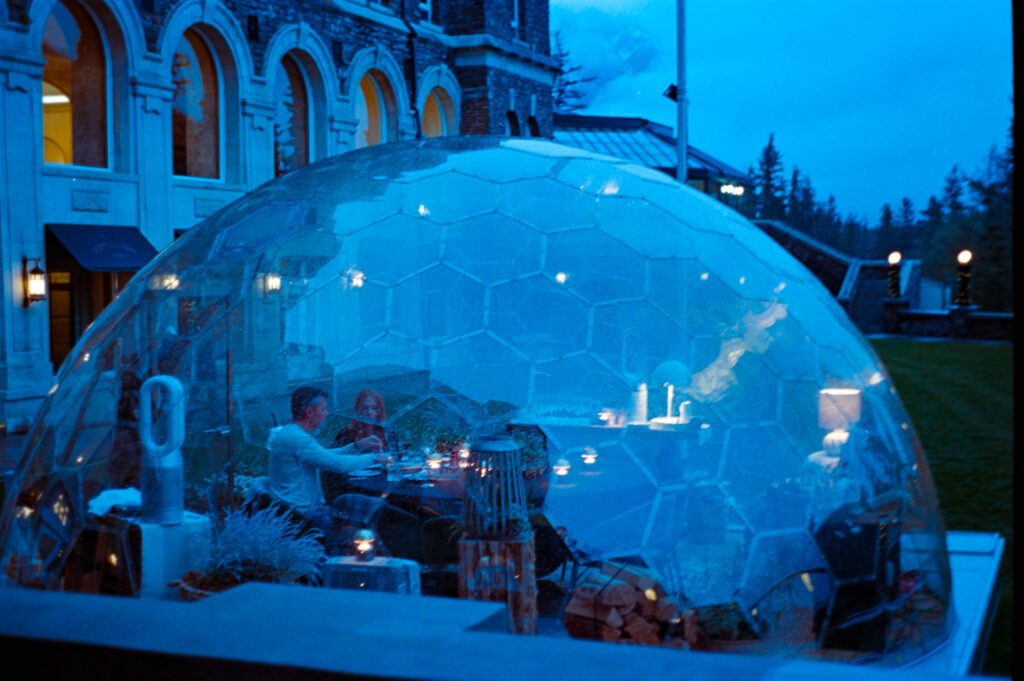
Or maybe a sequence where a photographer hangs enlarged prints all over his studio in the configuration of the hotel courtyard, obsessively studying them to try to figure out what is going on, like David Hemings in “Blow Up.”
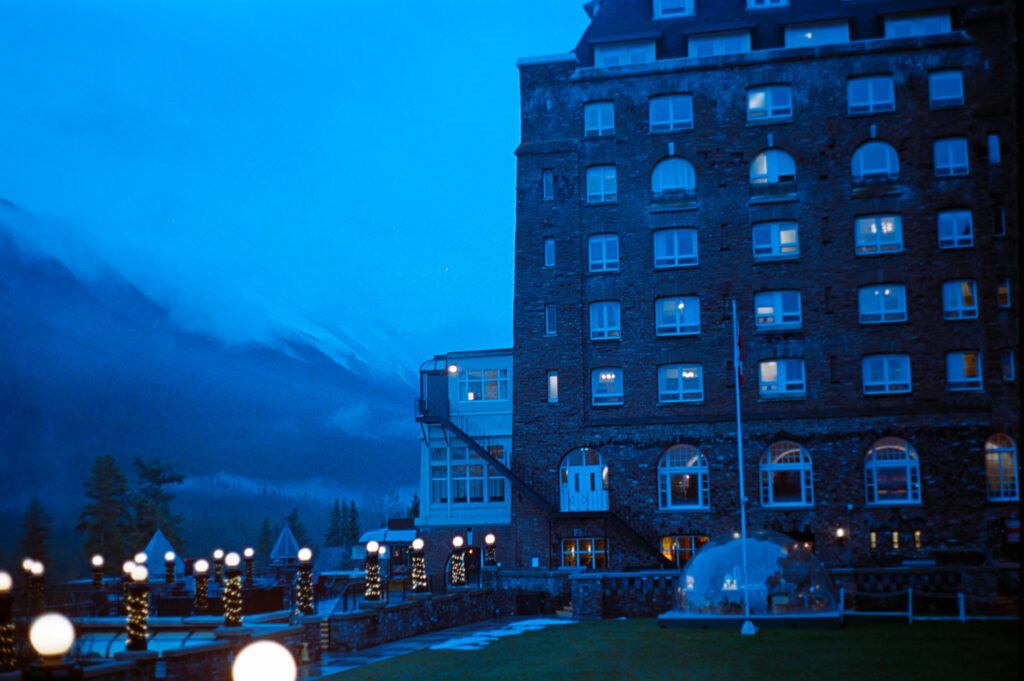
And then with one last shot, I was both out of film and out of light.
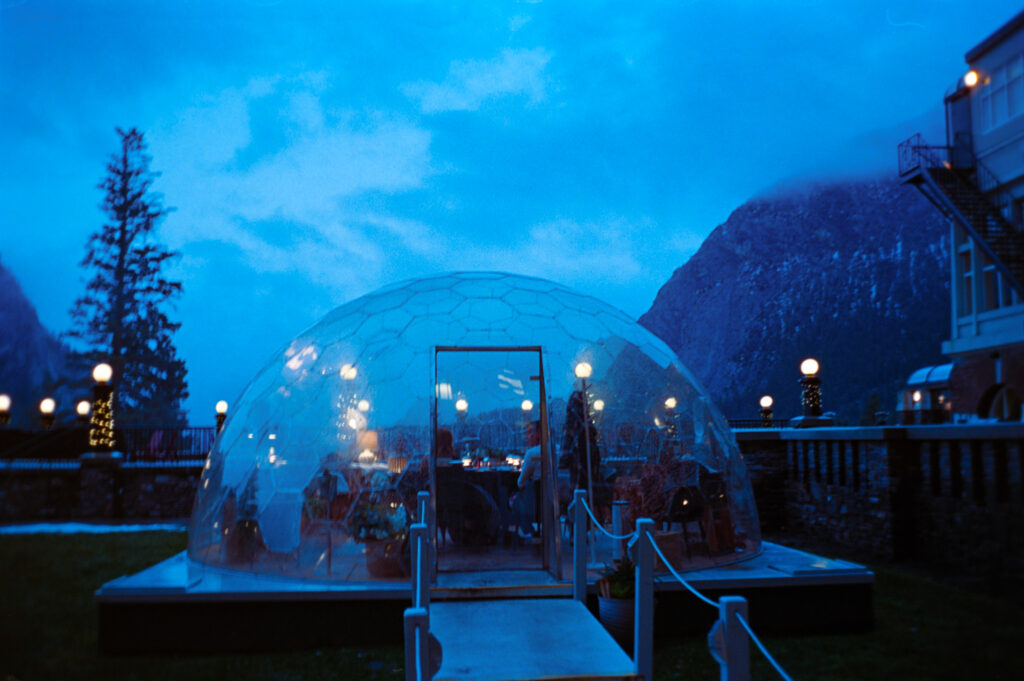
There you have it, 10 shots in 10 minutes!
Despite the gloomy forecast, the next day was beautiful and we drove up the Icefields Parkway and got some gorgeous photos of glaciers, snowcapped mountains, and alpine lakes. It was one of those days where it’s hard to take a bad picture and my son got to see what I had been talking about so much for so long in the heart of the Canadian Rockies.
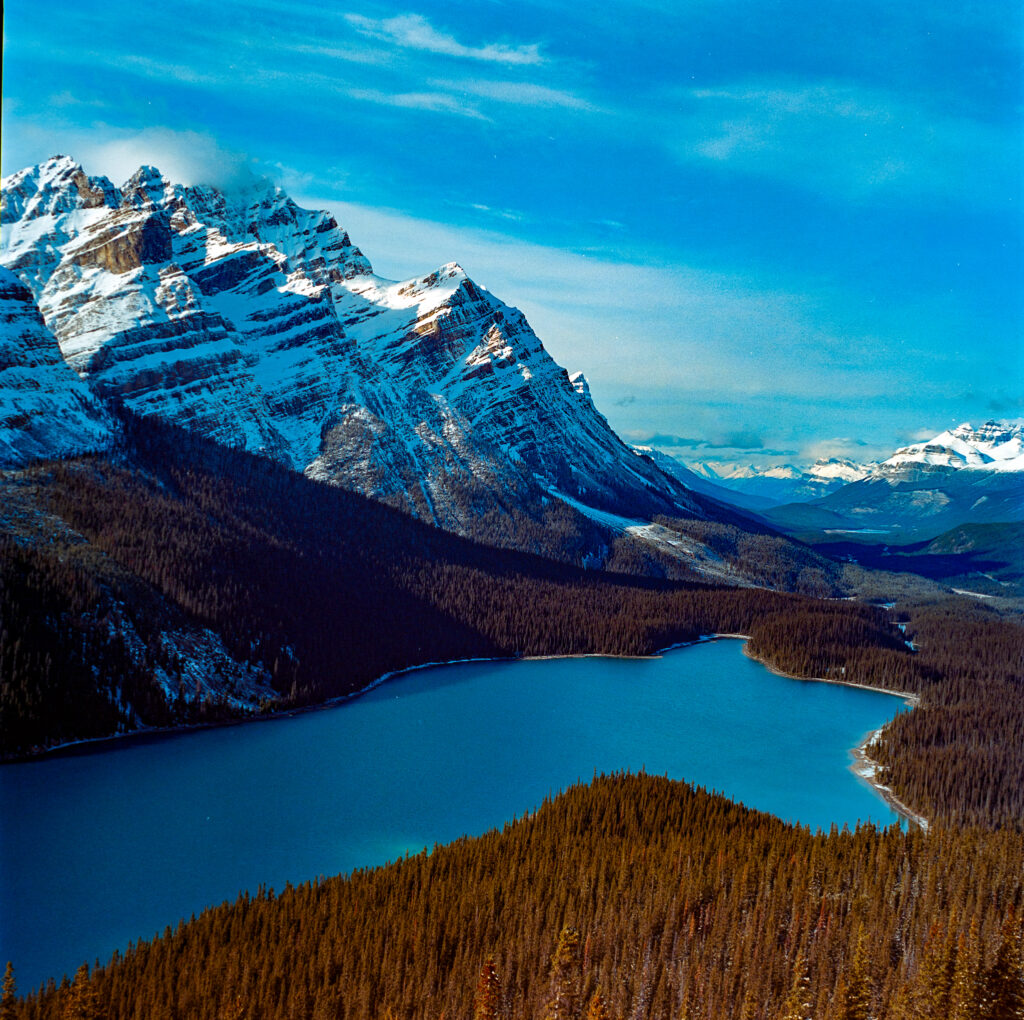
Share this post:
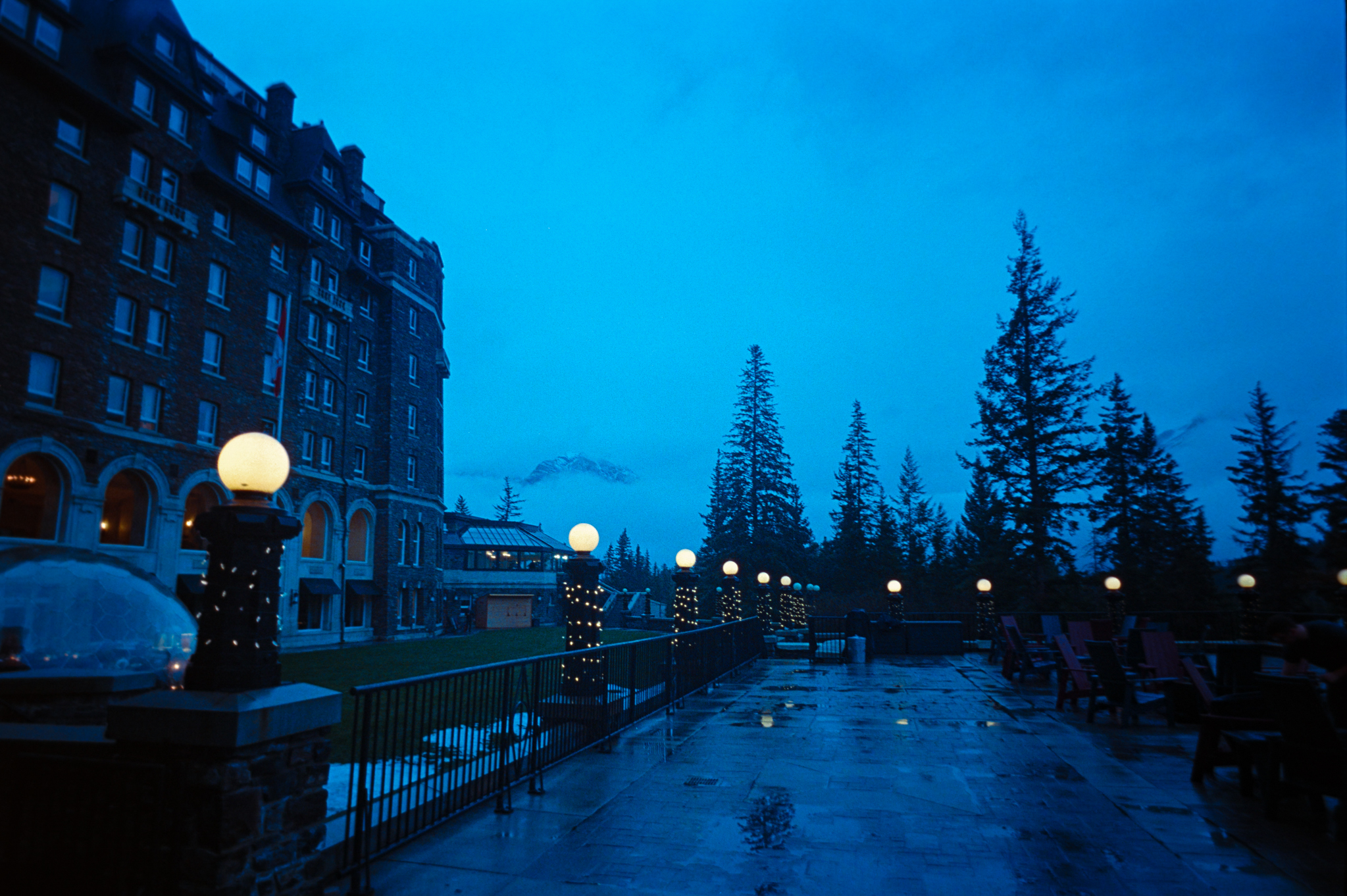
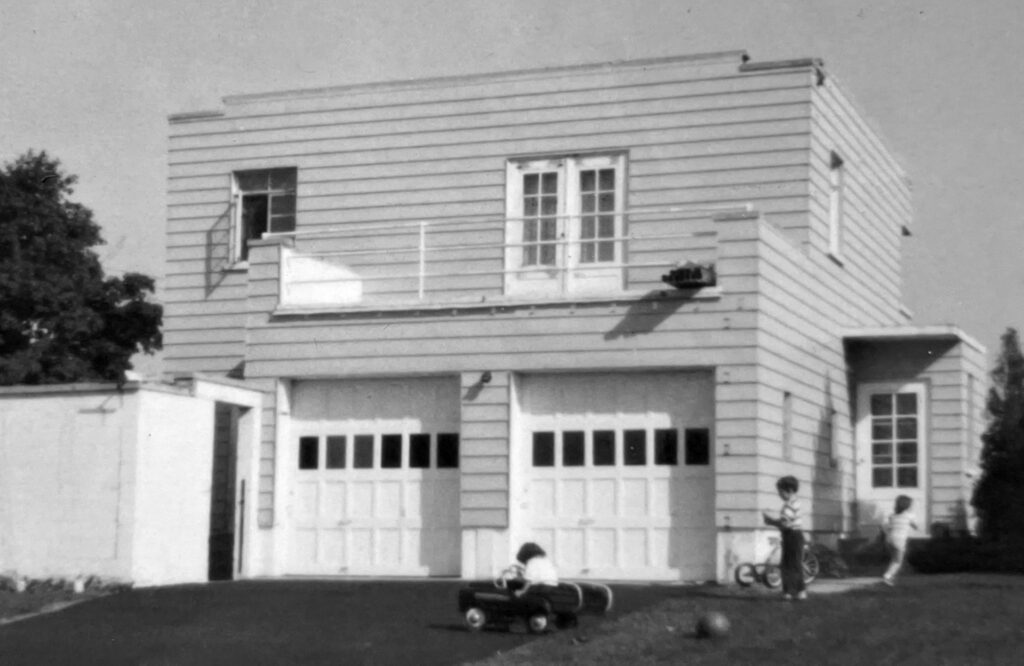
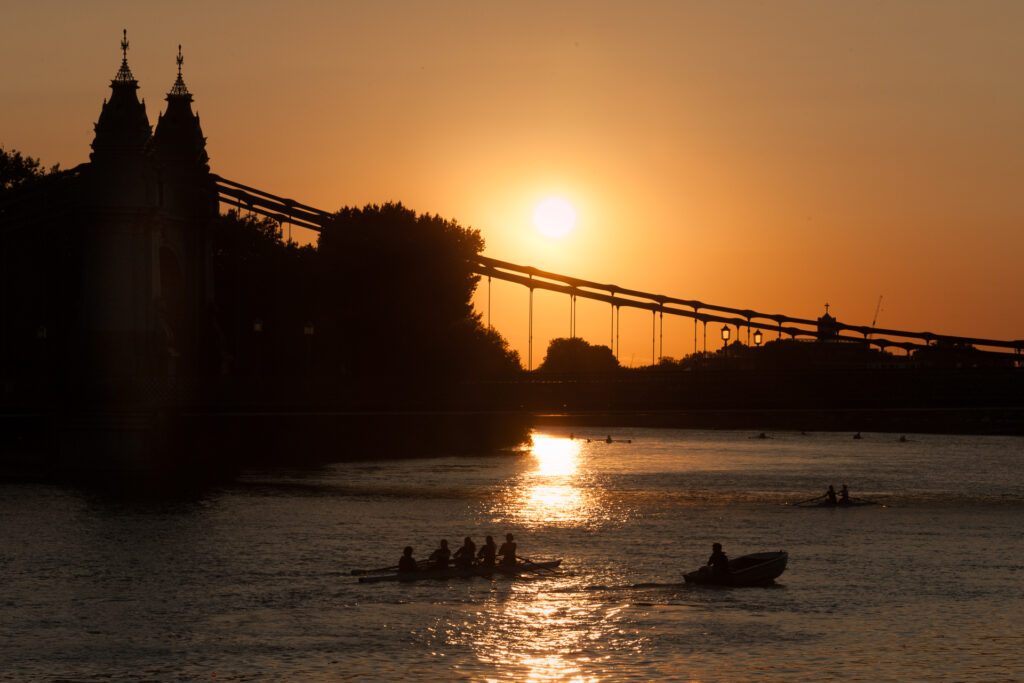
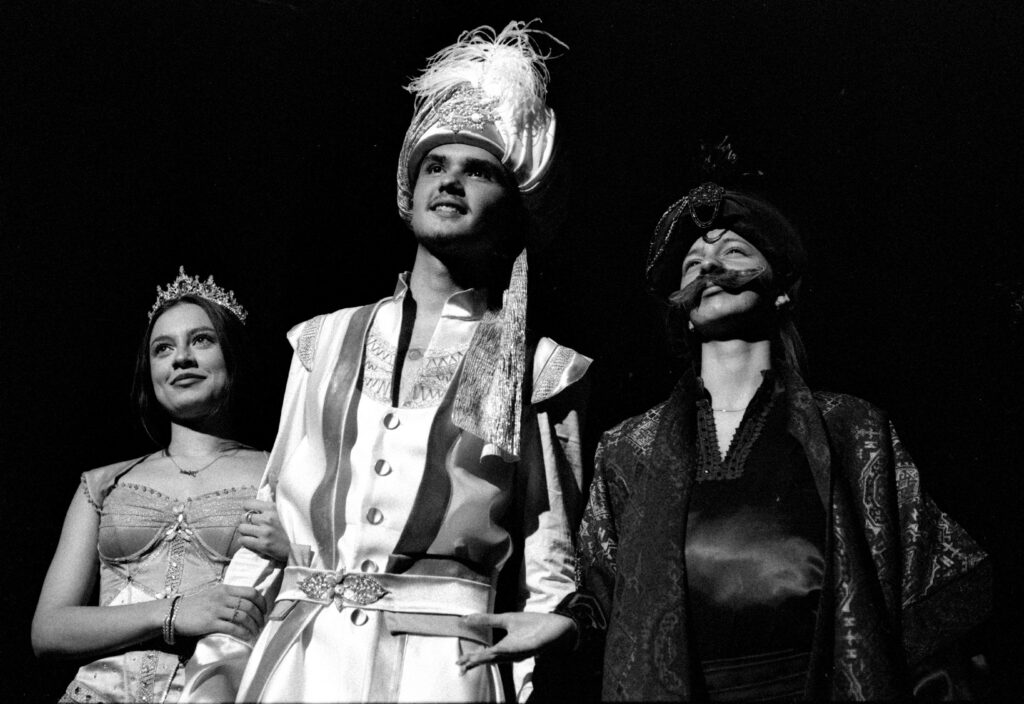
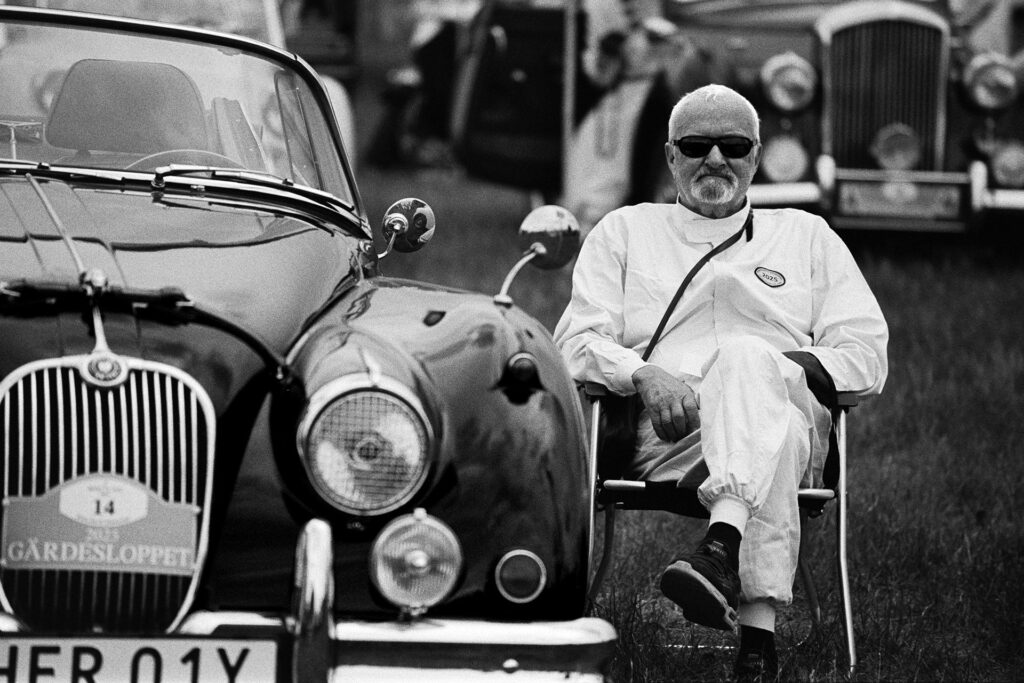
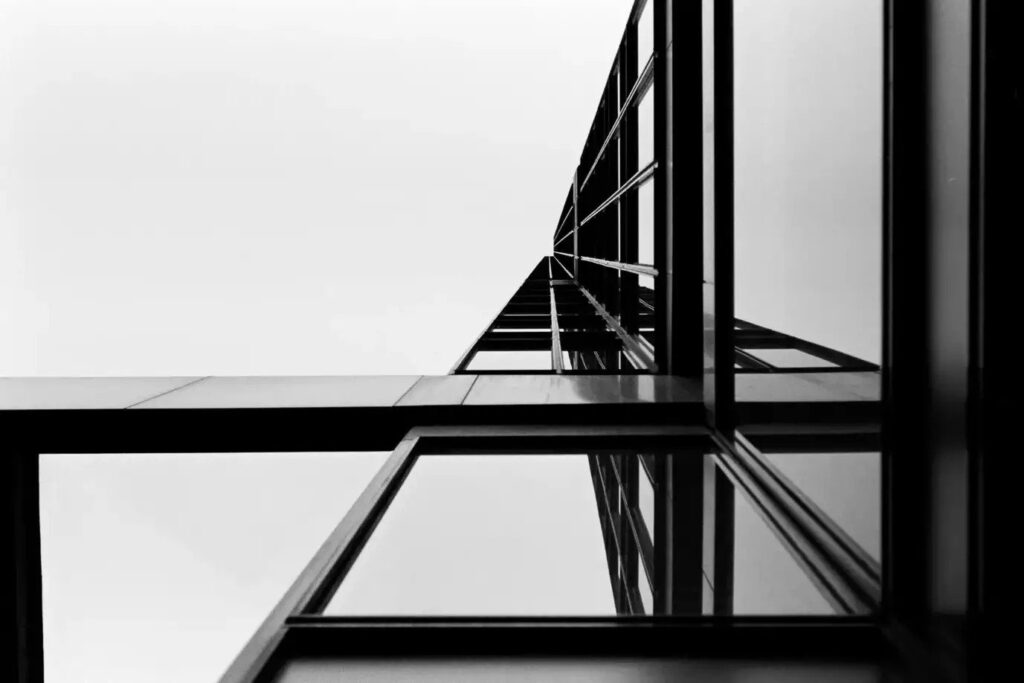
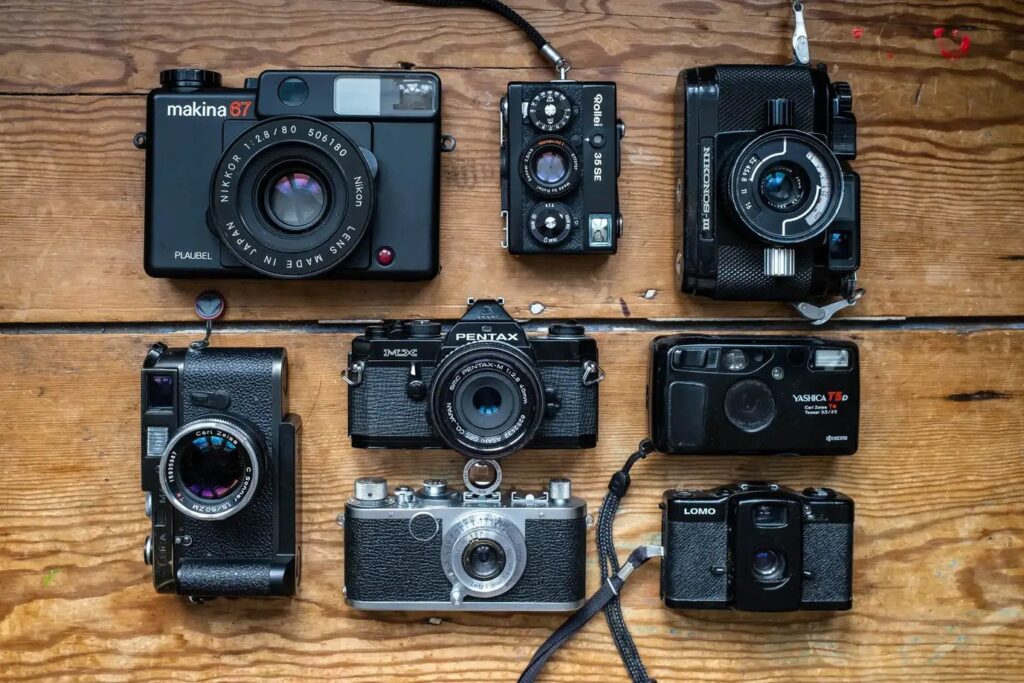
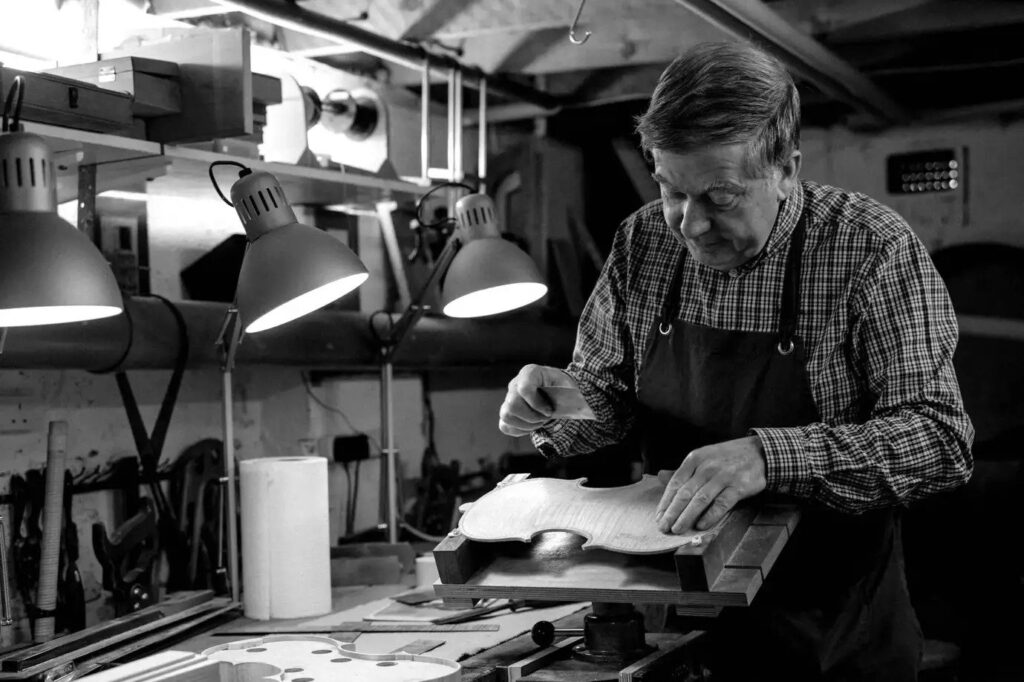
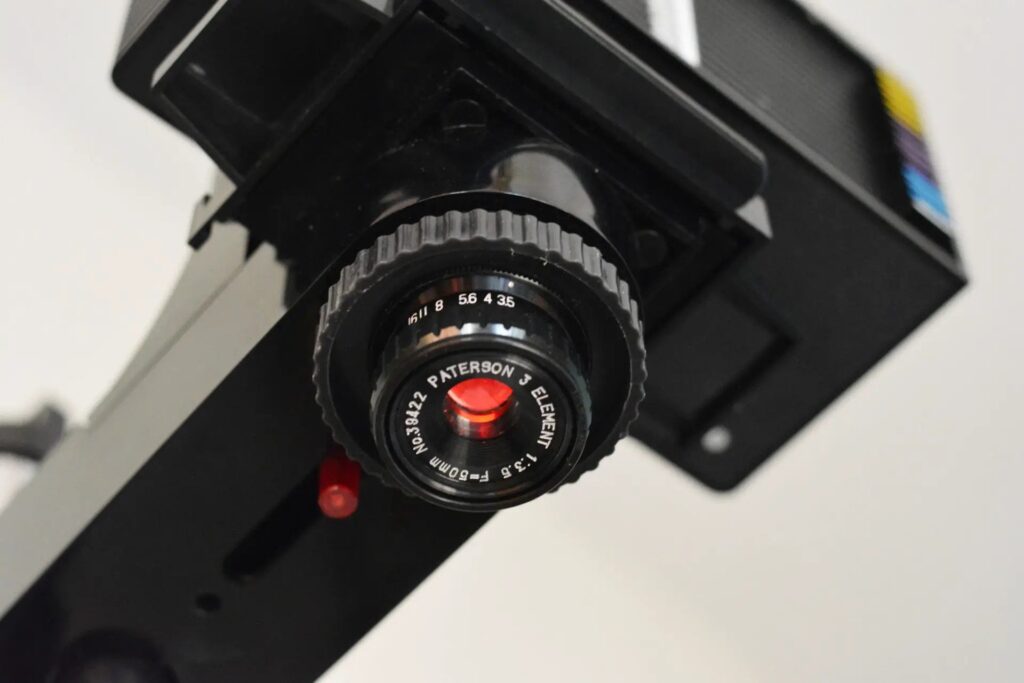
Comments
Martin on 10 Shots in 10 Minutes on a Leica M3 with Kodak Ultramax 400 in Banff, Alberta
Comment posted: 20/02/2025
Great pics and story. Thanks for sharing them with us!
Comment posted: 20/02/2025
Bill Brown on 10 Shots in 10 Minutes on a Leica M3 with Kodak Ultramax 400 in Banff, Alberta
Comment posted: 20/02/2025
Comment posted: 20/02/2025
Jeffery Luhn on 10 Shots in 10 Minutes on a Leica M3 with Kodak Ultramax 400 in Banff, Alberta
Comment posted: 20/02/2025
Thanks for the nice writing and great photos!
Speaking for myself: a longtime film photographer, then videographer, and now film guy again, creating images with manual cameras and film never loses its allure. Your background gives you a leg up, for sure, and it will give you a better success-to-disappointment ratio than a novice. But, as I'm sure you're seeing, getting good results on film, when it happens, is a reward that never gets old. Despite the challenges.
I hope you keep posting because I enjoy your stuff!
Comment posted: 20/02/2025
Gary Smith on 10 Shots in 10 Minutes on a Leica M3 with Kodak Ultramax 400 in Banff, Alberta
Comment posted: 20/02/2025
Thanks for sharing!
Comment posted: 20/02/2025
Comment posted: 20/02/2025
Comment posted: 20/02/2025